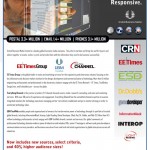A couple weeks ago I received an email passed along from our HQ in Japan that our website was getting copied by a Chinese company. This may take more than one post to discuss … here I’ll just tell you what happened. It gets more interesting than a rip-off of our website, so stick with me.
HQ’s email told us that they had found this company copying our division’s website, my baby! (I’ll abbreviate the offender’s name to GHT, my company is called ENA.)
The email from HQ:
Fwd: Written warning for the imitated website
As you have heard, there is a website that is remarkably similar to ENA. We would like to inform you of actions we took and our findings.
1. Our findings
After receiving this information through ENA, we have started investigating the company.
Company: (Lets just call them GHT)
Establishment: Jan, 27, 2011
Sales: 4,232,000RMB
Employees: 300
Their website (HK)
http://www.instrument .com.hk/Dan Ye30S2.html
Their website (China)
http://www.hong zhan.com.hk/cont acts.html (remove spaces to see the real deal)
2. Our actions
August 7th:
We sent a written warning as attached to the email account listed in the HK website, but it was returned. We sent the written warning to the email listed in the China website. It was not returned so we assume they have received it.
August 8th:
We sent the written warning to their China office by Fedex.
*As of today, we have not received any feedback or have not seen any actions by them.
3. Further actions that we wants to request for ENA:
This issue was discussed at the Directors’ meeting this morning and now below action is requested:
Please note on the ENA’s website that ENA does not have any relationship with this company and their imitated website. (Please use your wording regarding this note.)
This requested action is to prevent from any damages to our business.
If you have any questions, please let us know.
I’ve de-personalized the email and broken the URLs, but this is pretty much the email we got. My reactions (holding off on looking at the websites):
- Wow, this company was founded a year and a half ago and has 300 employees?
- Is there a reason why these specific page URLs are being shared? (no)
- Why do they have two websites for Hong Kong and China.
- Putting a note on our website is going to fix this? How am I going to do this anyway?
- Forget it, I’ve gotta click on those URLs!
The half-hearted website copy
As you will find out if you go to the first link, the company complied and took down the site. It was an exact copy of our current website, but with a logo that copycats our biggest competitor. There were some signs they had tried to change things, like an obvious search-replace of company names, but many of the hyperlinks actually went back to our website.
I was entertained and flattered. The more I clicked, the sillier it got. Was this worth legal action, I pondered. Well, I guess if they were going to complete the project, but as it stood, no one was going to confuse our companies, that’s for sure!
The more serious problem website
The other website URL looked more typical of a Chinese B2B website. Interestingly, it defaults to English, I assume by determining my location.
Wait, wait, I see a picture of one of our products. And the name of a different product of ours. And that picture looks almost exactly like one of ours, but it isn’t … HOLY SHIT THEY ARE TRYING TO COPY OUR PRODUCTS!
And with that revelation, I’ll discuss this issue of copying products in part 2.









